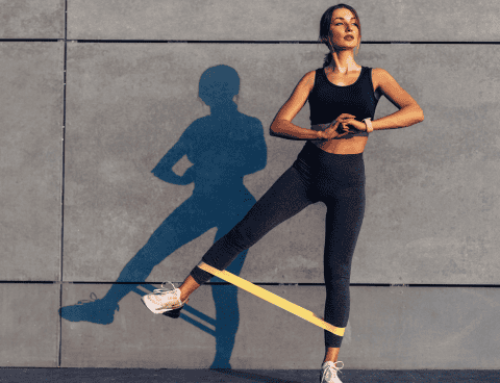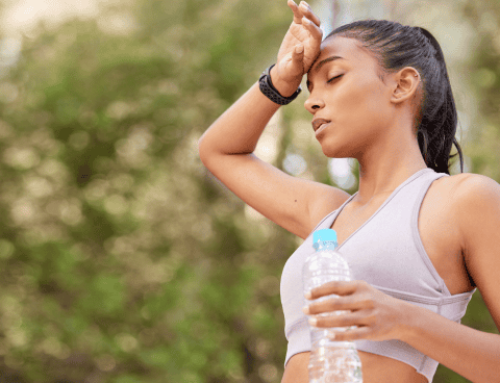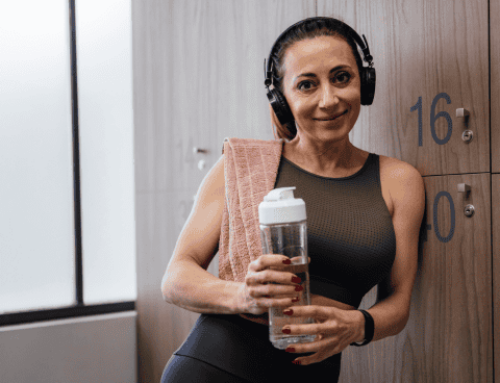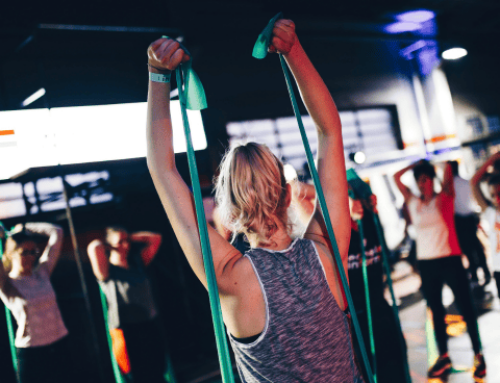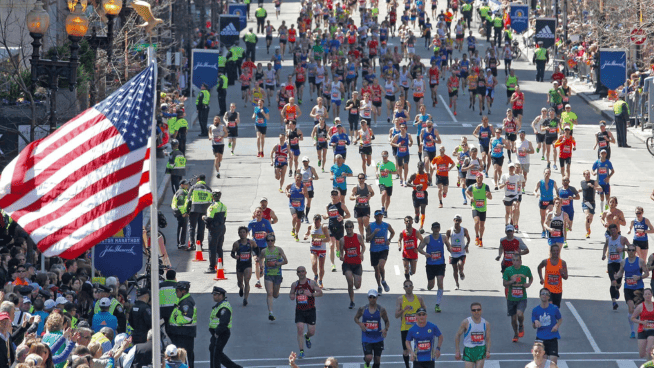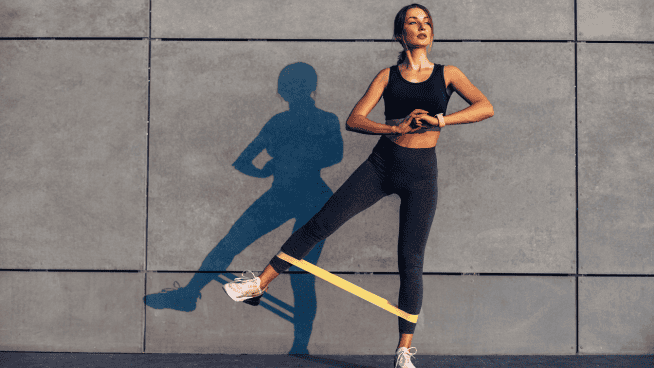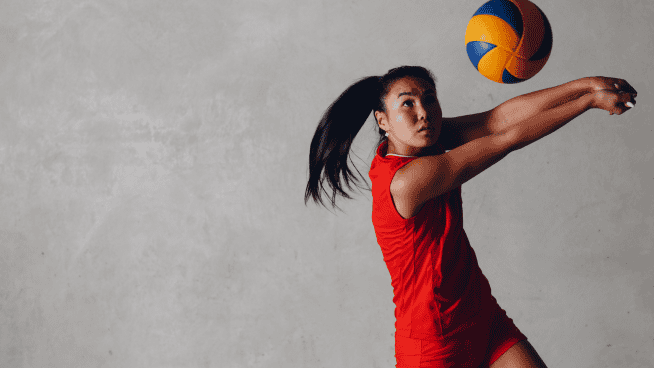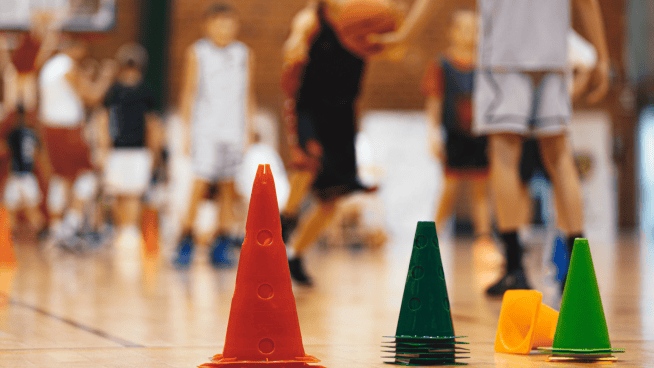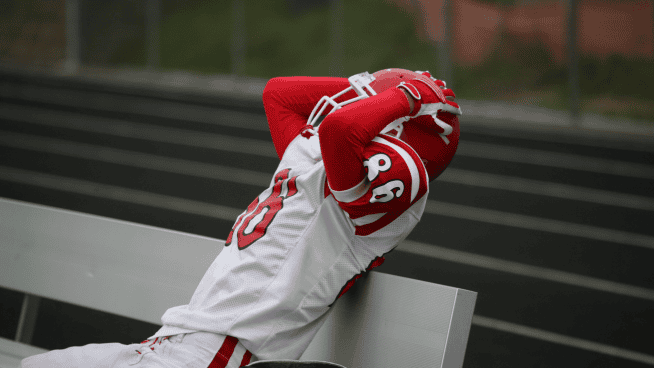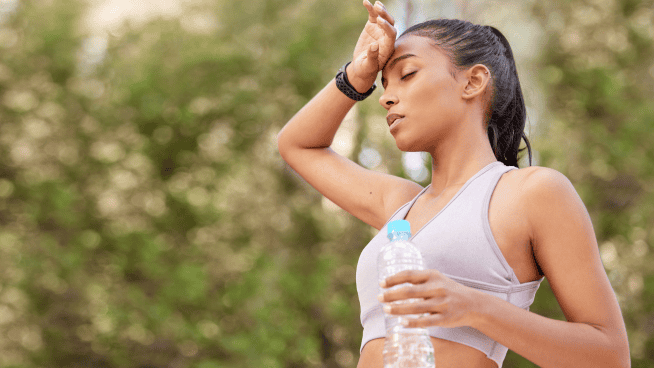3 Exercises Every Athlete Should Do
People waste a lot of time at the gym doing exercises that aren’t particularly effective. They also overlook essential moves that can help improve stability, mobility and strength—three areas that every athlete needs to improve. If your workout plan doesn’t include the following three moves, it isn’t worth the paper (or pixels) it’s printed on. Add Overhead Squats, Inverted Rows and Planks to your workout and watch your performance improve.
Overhead Squat
Perhaps no other exercise can tell you more about your body than the Overhead Squat. The move almost immediately brings to light any hip, knee or ankle issues you may have.
For example, squat with your hands out in front of you, then try squatting with your hands over your head and elbows locked. The Overhead Squat will feel more difficult, because it forces you to maintain an erect spine and mobile hips at the same time. When your hands are in front, you’re able to round your back, giving you the illusion of having good squat depth and flexible hips. By placing your hands above your head, you lock down the thoracic spine and force your hips to actually work.
One of the best ways to perform the move is with a broomstick or dowel. Hold the dowel over your head like you would if it were a bar, then squat. Watch PGA golfer Scott Stallings perform the Overhead Squat.
Sets/Reps: 3×10, performed every day
Inverted Rows
These rows don’t just build a strong upper back, they also help keep your shoulders healthy and train your core, glutes, upper back and biceps at the same time. Your core must stay engaged throughout the move to support your spine, because your body is hanging in free space. Your glutes contract to maintain that straight spine position, and the muscles of your upper back and arms do the work of rowing your body up and down.
To perform the move, set a bar in a squat rack at about waist height. Hang under the bar with your heels on the ground. Squeeze your glutes to put your body in a straight line, then row your body up to the bar. Try to touch the middle of your chest to the bar on every rep while keeping your shoulder blades and glutes contracted.
Sets/Reps: 3×5
Planks and Plank Variations
Sit-ups and crunches are for your grandparents. To really build a stronger, athletic core, you only need to do one thing: stay still. OK, well, stay still while holding your entire bodyweight off the ground—in a plank.
Why are planks so effective? Look at what the core actually does. If you didn’t have a stable core, your spine wouldn’t be able to support the weight of your head. Your upper body would literally fold in half. So your abs spend most of the day maintaining some level of consistent contraction just to keep you upright. Planks not only help your body provide the support it needs at rest, but also when you need it most, during competition.
Front Planks, Side Planks, Moving Planks and One-Arm or One-Leg Planks are all good options to develop an iron core. Beginners should start planking on their elbows and feet, with abs and glutes contracted. Position your shoulder blades so that your back stays flat.
Check out the Shawn Porter Plank Series.
Sets/Duration: start with 30-second holds of the basic Plank and work up to two minutes. Then try some variations.
RECOMMENDED FOR YOU
MOST POPULAR
3 Exercises Every Athlete Should Do
People waste a lot of time at the gym doing exercises that aren’t particularly effective. They also overlook essential moves that can help improve stability, mobility and strength—three areas that every athlete needs to improve. If your workout plan doesn’t include the following three moves, it isn’t worth the paper (or pixels) it’s printed on. Add Overhead Squats, Inverted Rows and Planks to your workout and watch your performance improve.
Overhead Squat
Perhaps no other exercise can tell you more about your body than the Overhead Squat. The move almost immediately brings to light any hip, knee or ankle issues you may have.
For example, squat with your hands out in front of you, then try squatting with your hands over your head and elbows locked. The Overhead Squat will feel more difficult, because it forces you to maintain an erect spine and mobile hips at the same time. When your hands are in front, you’re able to round your back, giving you the illusion of having good squat depth and flexible hips. By placing your hands above your head, you lock down the thoracic spine and force your hips to actually work.
One of the best ways to perform the move is with a broomstick or dowel. Hold the dowel over your head like you would if it were a bar, then squat. Watch PGA golfer Scott Stallings perform the Overhead Squat.
Sets/Reps: 3×10, performed every day
Inverted Rows
These rows don’t just build a strong upper back, they also help keep your shoulders healthy and train your core, glutes, upper back and biceps at the same time. Your core must stay engaged throughout the move to support your spine, because your body is hanging in free space. Your glutes contract to maintain that straight spine position, and the muscles of your upper back and arms do the work of rowing your body up and down.
To perform the move, set a bar in a squat rack at about waist height. Hang under the bar with your heels on the ground. Squeeze your glutes to put your body in a straight line, then row your body up to the bar. Try to touch the middle of your chest to the bar on every rep while keeping your shoulder blades and glutes contracted.
Sets/Reps: 3×5
Planks and Plank Variations
Sit-ups and crunches are for your grandparents. To really build a stronger, athletic core, you only need to do one thing: stay still. OK, well, stay still while holding your entire bodyweight off the ground—in a plank.
Why are planks so effective? Look at what the core actually does. If you didn’t have a stable core, your spine wouldn’t be able to support the weight of your head. Your upper body would literally fold in half. So your abs spend most of the day maintaining some level of consistent contraction just to keep you upright. Planks not only help your body provide the support it needs at rest, but also when you need it most, during competition.
Front Planks, Side Planks, Moving Planks and One-Arm or One-Leg Planks are all good options to develop an iron core. Beginners should start planking on their elbows and feet, with abs and glutes contracted. Position your shoulder blades so that your back stays flat.
Check out the Shawn Porter Plank Series.
Sets/Duration: start with 30-second holds of the basic Plank and work up to two minutes. Then try some variations.


